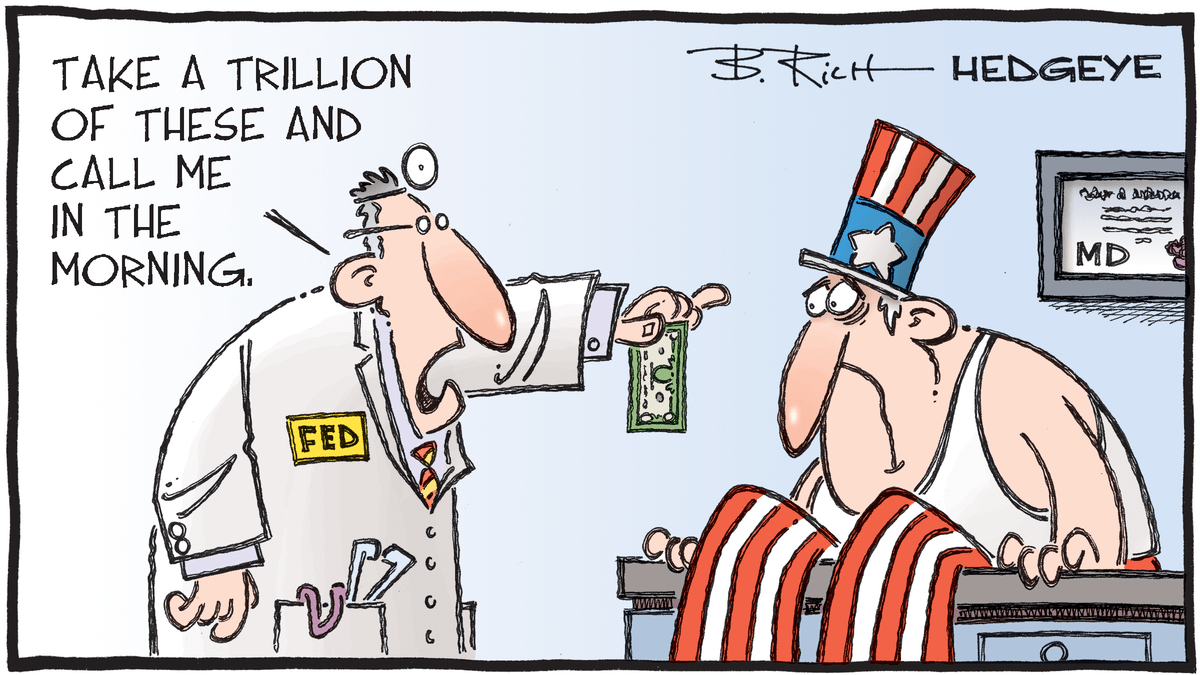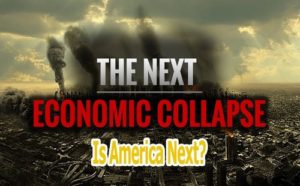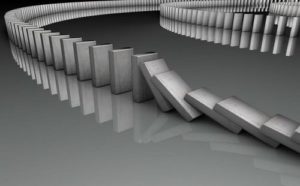President Reagan memorably said that the nine words you don’t want to hear are “I’m from the government, and I’m here to help.” Governments in all the major jurisdictions are now making good on that unwanted promise and are taking responsibility for everything from our shoulders.

Those receiving subsidies and loan guarantees are no doubt grateful, though they probably see it as the government’s duty and their right. But someone has to pay for it. In the past, the redistribution of wealth through taxes meant that the haves were taxed to give financial support to the have-nots, at least that was the story. Today, through monetary debasement nearly everyone benefits from monetary redistribution.
This is not a costless exercise. Governments are no longer robbing Peter to pay Paul. They are robbing Peter to pay Peter as well. You would think this is widely understood, but the Peters are so distracted by the apparent benefits they might or might not get that they don’t see the cost. They fail to appreciate that printing money is not just the marginal source of financing for excess government spending, but that it has now become mainstream.
There is almost a total absence in the established media of any commentary on the consequences of monetary inflation, and in a cry for more we even have financial experts warning us of a deflationary collapse and the need for the Fed to introduce negative interest rates to stave off deflation. Yes, there are deflationary forces, because banks wish to reduce their loan exposure at a time of increasing risk. But we can be sure that central banks and their political masters will do everything they can to counter the trend of contracting bank credit by increasing base money. There can only be one outcome: the debasement and eventual destruction of fiat currencies.
There is an aspect of the destruction brought about by monetary policy which is almost never considered by policymakers, and that is how it distorts the allocation of capital and leads to its misallocation. In free markets, capital is scarce and must be used to greatest effect if the consumer is to be properly served and the entrepreneur is to maximize his profits.
Capital comes in several forms and encompasses every aspect of production: principally an establishment, machinery, labor, semimanufactured goods and commodities to be processed, and money. An establishment, such as a factory or offices, and the availability of labor are relatively fixed in their capacity. Depending on their deployment and capacity they produce a limited amount of goods. It is just one form of capital, money and credit, which central banks and the banking system now provide, and which in its unbacked form is infinitely flexible. Consequently, attempts to stimulate production by monetary means still run into the capacity constraints of the other forms of capital.
Monetary policy has been increasingly used to manipulate capital allocation since the early days of the Great Depression. The effect has varied, but it has generally come up against the constraints of the other forms of capital. Where there is excess labour, it takes time to retrain it with the specialized skills required, a process hampered by trade unions ostensibly protecting their members but in reality resisting the reallocation of labor resources. Government control over planning and increasingly stifling regulations, again putting a brake on change, mean that changes and additions to the use of establishments have lengthened the time before entrepreneurial investment is rewarded with profits. Government intervention has also discouraged the withdrawal of monetary capital from unprofitable deployment, or malinvestments, lengthening recessions needlessly.
When the advanced nations had strong industrial cores, the periodic expansions of credit and their subsequent sudden contractions led to observable booms and busts in the classical sense, since production of labor-intensive consumer goods dominated production overall.
There have been two further developments.
The first was the abandonment of the Bretton Woods agreement in 1971, which led to a substantial rise in prices for commodities. The broad-based UN index of commodities rose from 33 to 157 during the decade, a rise of 376 percent. This input category of production capital compared unfavorably with US consumer price increases of 112 percent over the decade, the mismatch between these and other categories of capital allocation making economic calculation a fruitless exercise.
The second development was the liberation of financial controls in the mid-eighties, London’s Big Bang and the repeal of America’s Glass-Steagall Act of 1933, allowing commercial banks to fully embrace and exploit investment banking activities.
The banking cartel increasingly directed its ability to create credit toward purely financial activities mainly for their own books, thereby financing financial speculation while deemphasising bank credit expansion for production purposes for all but the larger corporations. Partly in response, the nineties saw businesses move production to low-cost centers in Southeast Asia, where all forms of production capital, with the exception of monetary capital, were significantly cheaper and more flexible.
There then commenced a quarter-century of expansion of international trade replacing much of the domestic production of goods in the US, the UK, and Europe. It was these events that denuded America of its manufacturing, not unfair competition as President Trump has alleged, and Germany’s retention of manufactures proves this. But the effect has been to radically alter how we should interpret the effects of monetary expansion on the US economy and others, compared with Hayekian triangles and the like.
Business cycle research had assumed a capitalistic structure of savers saving and thereby making monetary capital available to entrepreneurs. Changes in the propensity to save sent contrary signals to businesses about the propensity to consume, which caused them to alter their production plans. Based on the ratio between consumer spending and savings, this analytic model has been corrupted by the state and its licensed banks by replacing savers with former savers now no longer saving, and even borrowing to consume.
Today, the inflationary origins of investment funds for business development are hidden through financial intermediation by venture capital funds, quasi-government funds, and others. Being mandatory, pension funds continue to invest savings, but their beneficiaries have abandoned voluntary saving and run up debts, so even pension funds are not entirely free of monetary inflation. Insurance funds alone appear to be comprised of genuine savings within an inflationary system.
Other than pension funds and insurance companies, Keynes’s wish for the euthanasia of the saver has been achieved. He went on to suggest there would be a time “when we might aim in practice…at an increase in the volume of capital until it ceases to be scarce, so that the functionless investor will no longer receive a bonus.”
Now that everywhere bank deposits pay no interest, his wish has been granted, but Keynes did not foresee the unintended consequences of his inflationist policies which are now being visited upon us. Among other errors, he failed to adequately account for the limitation of nonmonetary forms of capital, which leads to bottlenecks and rising prices as monetary expansion proceeds.
The unintended consequences of neo-Keynesian policy failures are shortly to be exposed. The checks and balances on the formation and deployment of monetary capital in the free market system have been completely destroyed and replaced by inflation. So, where do you take us from here, Mr. Powell, Mr. Bailey, Ms. Lagarde, Mr. Kuroda?
Taking Stock
We can now say that America, the nation responsible for the world’s reserve currency, has encouraged policies which have turned its economy from being a producer of goods with supporting services as the source of its citizens’ wealth into little more than a financial casino. The virtues of saving and thrift have been replaced by profligate spending funded by debt. Unprofitable businesses are being supported until the hoped-for return of easier times, which are now gone.
Cash and bank deposits (checking accounts and savings deposits) are created almost entirely by inflation and currently total $15.2 trillion in the US, while total commercial bank capital is a little under $2 trillion. This tells us crudely that the $13 trillion sitting in customer accounts can be attributed to bank credit inflation. Increasing proportions of those customers are financial corporations and foreign entities, and not consumers maintaining cash and savings balances.
On the other side of bank balance sheets is consumer debt, mostly off balance sheet, but ultimately funded on balance sheet. Excluding mortgages, the total consumer debt, comprising credit card, auto, and student debt, was $3.86 trillion in mid-2019, amounting to an average debt of $27,571 per household, confirming the extent to which consumer debt has replaced savings.3
At $20.5 trillion, bank balance sheets are far larger than just the sum of cash and bank deposits, giving them a leverage of over ten times their equity. Bankers will be very nervous of the current economic situation, aware that loan and other losses of only 10 percent wipe out their capital. Meanwhile, their corporate customers are either shut down, which means that most of their expenses continue while they have no income, or they are suffering payment disruptions in their supply chains. In short, bank loan books are staring at disaster. Effectively, the whole banking system is underwater at the same time that the Fed is extolling them to join with it in rescuing the economy by expanding their balance sheets even more.
The sums involved in supply chains are considerably larger than the US’s GDP. Onshore, it is a substantial part of the nation’s gross output, which captures supply chain payments at roughly $38 trillion. Overseas, there is a further mammoth figure feeding into the dollar supply chain, taking the total for America to perhaps $50 trillion. The Fed is backstopping the foreign element through currency swaps and the domestic element mainly through the commercial banking system. And it is indirectly funding government attempts to support consumers who are in the hole for that $27,571 on average per household.
In short, the Fed is committed to rescuing all business from the greatest economic collapse since the Great Depression and, probably greater than that, to funding the US government’s rocketing budget deficits and funding the maintenance of domestic consumption directly or indirectly through the US Treasury, while pumping financial markets to achieve these objectives and preserve the illusion of national wealth.
Clearly, we stand on the threshold of an unprecedented monetary expansion. Part of it will be, John Law–style, to ensure that inflated prices for US Treasurys are maintained. At current interest rates, debt servicing was already costing the US government 40 percent of what was expected to be this year’s government deficit. That bill will now rise beyond control even without bond yields rising. Assistance is also being provided to the corporate debt market. Blackrock has been deputed to channel the Fed’s money-printed investment through ETFs (exchange-traded funds) specializing in this market. So not only is the Fed underwriting the rapidly expanding US Treasury market, but it is underwriting commercial dollar debt as well.
In late 1929, a rally in the stock market was prolonged by a similar stimulus, with banks committed to buying stocks and the Fed injecting $100 million in liquidity into markets by buying government securities. Interest rates were cut. And when these attempts at maintaining asset prices failed, the Dow declined, losing 89 percent of its value from September 1929.
Today, similar attempts to rescue economies and financial markets by monetary expansion are common to all major central banks, with the possible exception of the European Central Bank (ECB), which faces the unexpected obstacle of a challenge by the German Federal Constitutional Court claiming primacy in these matters. There is therefore an added risk that the global inflation scheme will unravel in Europe, which would rapidly lead to funding and banking crises for the spendthrift member states. Doubtless, any financial contagion will require yet more money printing by the other major central banks to ensure that there are no bank failures in their domains.
Whither the Exit?
So far, few commentators have grasped the implications of what amounts to the total nationalization of the American economy by monetary means. They have only witnessed the start of it, with the Fed’s balance sheet reflecting the earliest stages of the new inflation which has seen its balance sheet increase by 61 percent so far this year. Not only will the Fed battle to fund everything, but it will also have to compensate for contracting bank credit, which we know stands at about $18 trillion.
The Fed must be assuming that the banks will cooperate and pass on the required liquidity to save the economy. Besides the monetary and operational hurdles such a policy faces, it cannot expect the banks to want responsibility for the management of businesses that without this funding would not exist. The Fed, or some other government agency, then has to decide on one of three broad options: further support, withdrawing support, or taking responsibility for business activities. This last option involves full nationalization.
We must not be seduced into thinking that this is an outcome that can work. The nationalization of failing banks and their eventual privatization is not a good precedent for wider nationalization, because a bank does not require the entrepreneurial flair to estimate future consumer demand and to undertake the economic calculations to provide for it. The state taking over business activities fails for this reason, as demonstrated by the collapse of totalitarian states such as the USSR and the China of Mao Zedong.
That leaves a stark choice between indefinite monetary support or pulling the rug from under failing businesses. There are no prizes for guessing that pulling rugs will be strongly resisted. Therefore, government support for failing businesses is set to continue indefinitely.
At some stage, the dawning realization that central banks and their governments are steering into this economic cul-de-sac will undermine government bond yields, despite attempts by central banks to stop it, even if the deteriorating outlook for fiat currencies’ purchasing power does not destroy government finances first.
Earlier in the descent into the socialization of money, nations had opportunities to change course. Unfortunately, they had neither the knowledge nor the guts to the divine and implement a return to free markets and sound money. Those opportunities no longer exist, and there can be only one outcome: the total destruction of fiat currencies, accompanied by all the hardships that go with it.
StevieRay Hansen
Editor, Bankster Crime
Source ZeroHedge
MY MISSION IS NOT TO CONVINCE YOU, ONLY TO INFORM YOU…
https://bankstercrime.com/coronavirus-triggers-biggest-shock-to-oil-markets-since-lehman-crisis/
My job is protecting children. It has taken me from big cities to rural outposts, from ghettos to penthouses, and from courtrooms, into demonic battlefields. But whatever the venue, the truth remains constant: Some humans intentionally hurt children. They commit unspeakable acts—for their pleasure, their profit, or both. StevieRay Hansen, CEO The 127 Faith Foundation
“Have I therefore become your enemy by telling you the truth?”
The 127 Faith Foundation understands the pain and sorrow associated with being a throwaway child, We push this throwaway child towards bettering their education, be it junior-college are going for a Masters’s degree. This program is about them because they determine by the grace of God if they’re going to be a pillar in the community or a burden on society. Some of the strongholds orphans deal with are: fear, resentment, bitterness, unforgiveness, apathy, unbelief, depression, anxiety, lust, anger, pride, and greed. Many of these strongholds do open the door to addiction. Please Help The127
PayPal.Me/the127faithfoundatio
![]()




